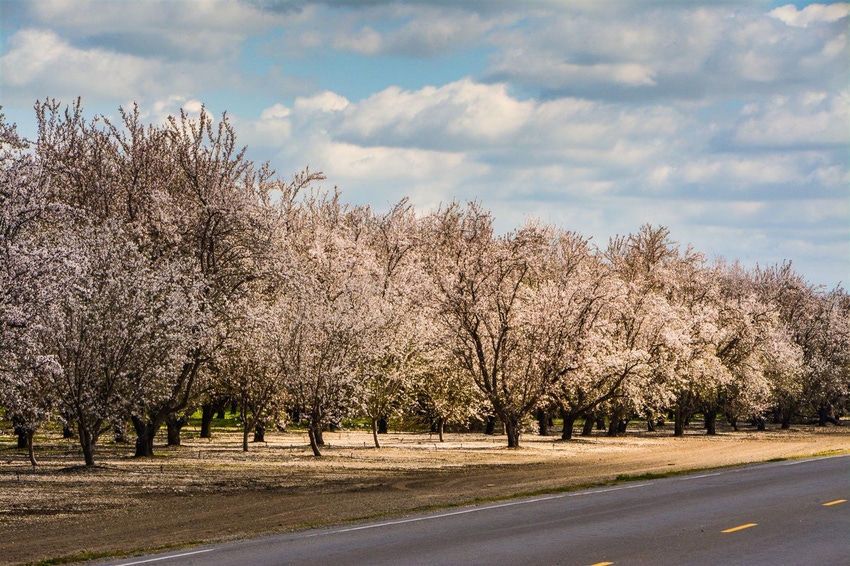May 11, 2017

The California subjective almond forecast is out with what some call a “surprising” number because of relatively poor weather conditions through a long bloom period.
The 2017 California Almond Forecast, better known as the “subjective forecast” by the National Agricultural Statistics Service (NASS), is the first public peek into what the upcoming California almond crop could be and is based solely on a telephone survey of growers conducted between April 25 and May 4.
Based on those phone calls, the early estimate for the 2017 almond crop is 2.2 billion pounds, slightly higher than the 2016 record crop, that looks to be over 2.14 billion pounds. The final 2016 harvest tally will not be known until after July.
The forecast includes a projection of average yields at 2,200 pounds per acre across one million bearing acres. Growers saw similar yields last year across 940,000 bearing acres.
A scientific survey called the “Objective Forecast” will be issued in July and is based on an actual count of nuts on the trees. It should reflect a more accurate prediction of almond yields later this summer. That forecast is also issued by NASS, in cooperation with the California Department of Food and Agriculture.
NASS is reporting the 2017 almond bloom as “extended” due to cold temperatures. It also lasted through some late-winter rains, making it more difficult for growers to apply fungicides and .
This year’s extended bloom comes after the “flash bloom” of 2016, where trees blossomed quickly and at the same time, and were pollinated in a much shorter time period under more favorable bee flight conditions.
Some frost was reported during the 2017 pollination period as well.
In a separate report unrelated to the NASS forecast, Blue Diamond Almonds, a Sacramento-based almond cooperative, issued a progress report of conditions from March 27 through April 30, nearly the same time frame that NASS was conducting its telephone interviews with growers.
In the report Blue Diamond says April brought “varying conditions to the Central Valley, with periods of sunshine intermixed with occasionally heavy rain and strong winds.”
In some cases the windy conditions caused tree damage that knocked nuts from the trees, caused broken branches and toppled trees.
Still, Blue Diamond is reporting a crop that is “developing well” with nuts that “are now fully sized.”
In other cases, trees are said to be shedding unfertilized nuts and in those areas where repeated heavy rains occurred, some orchards are experiencing Phytophthora root rot infections.
You May Also Like




